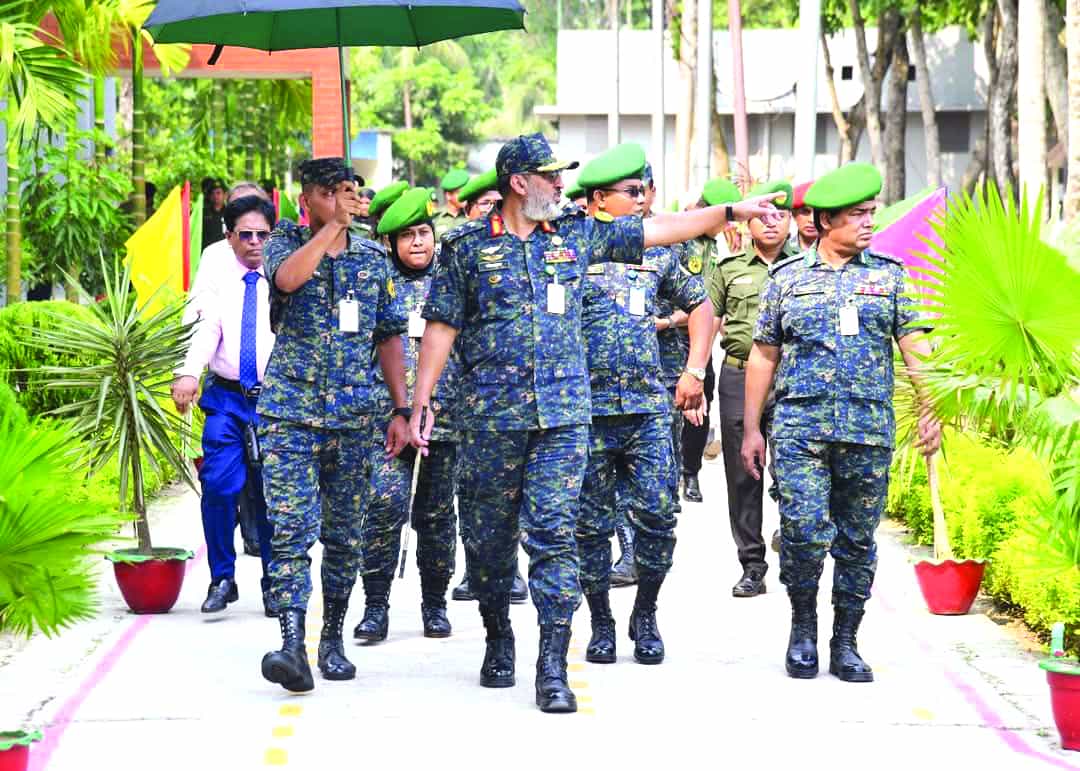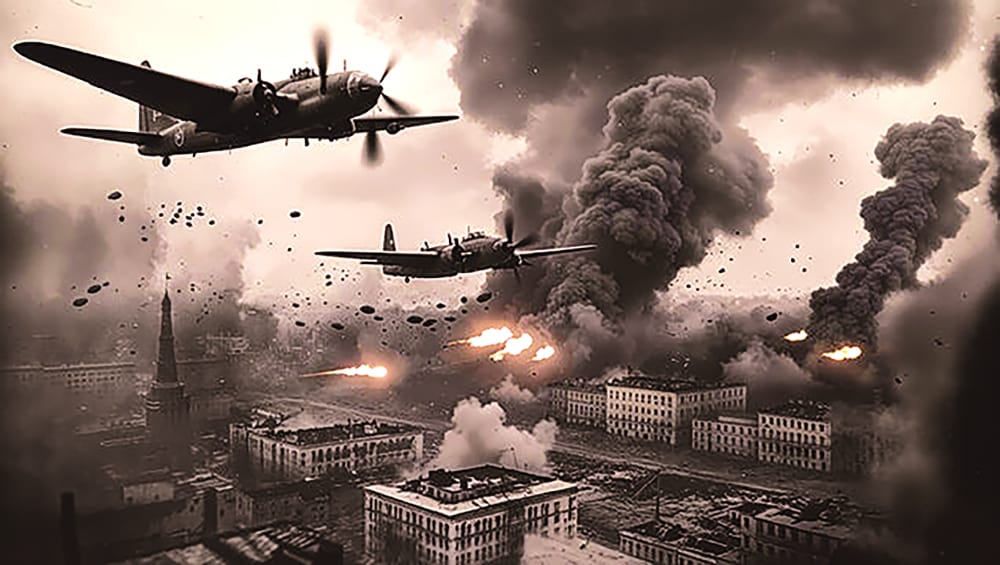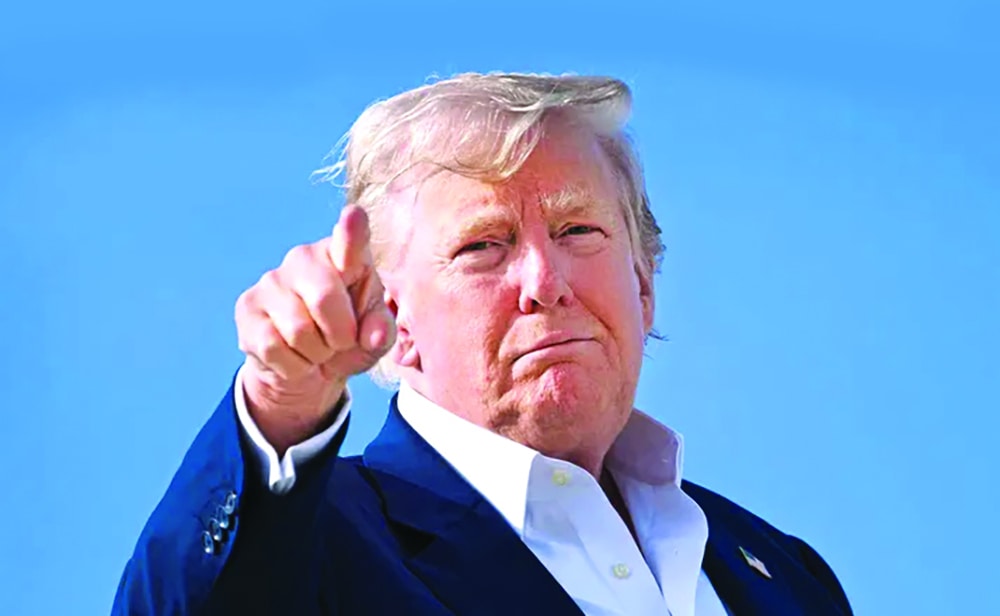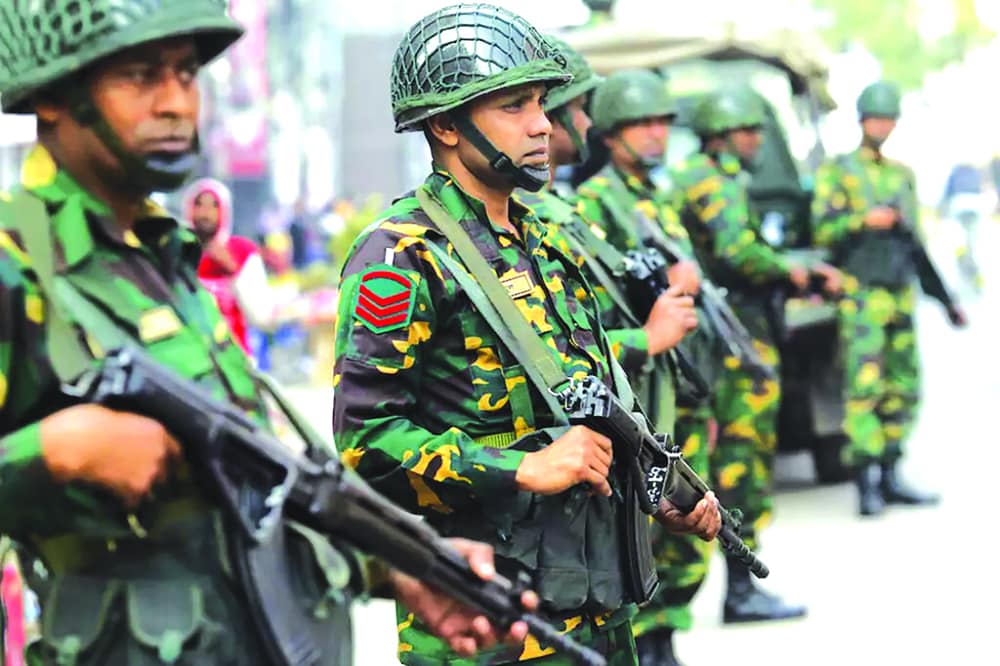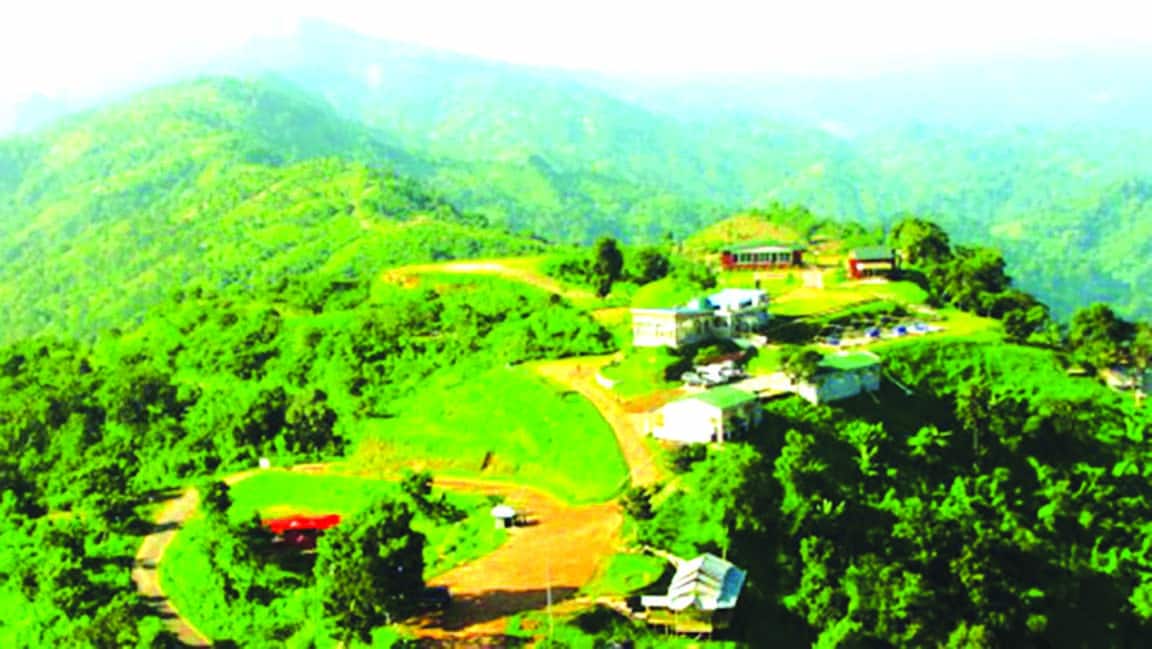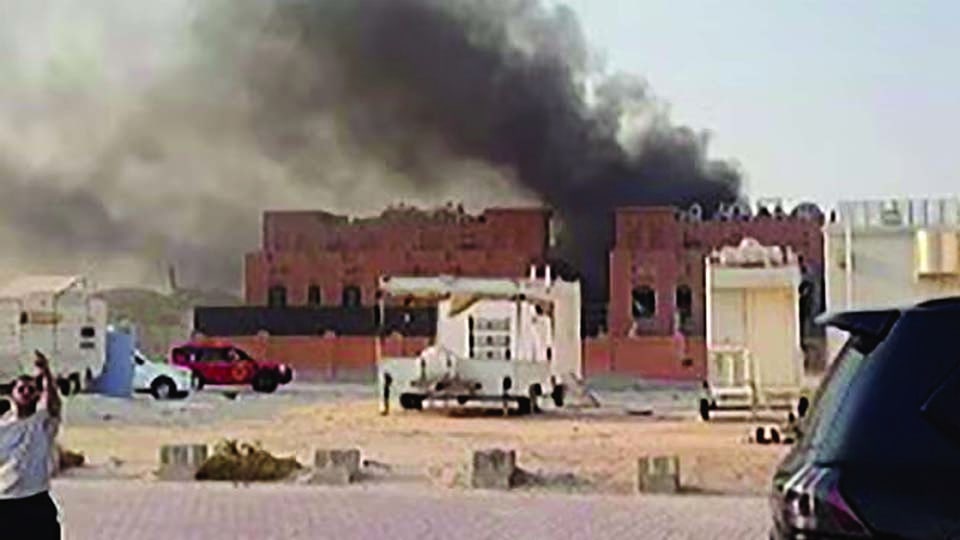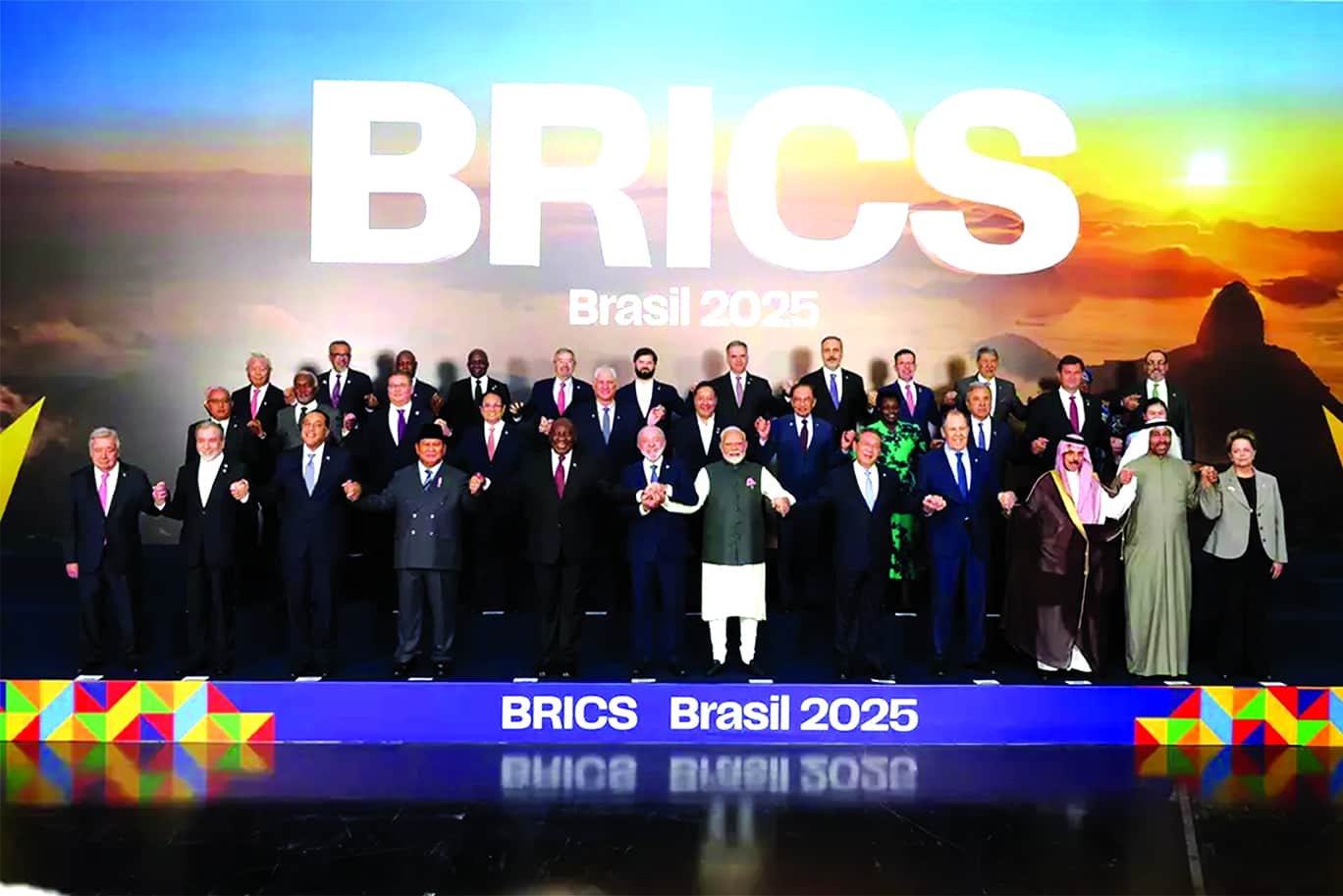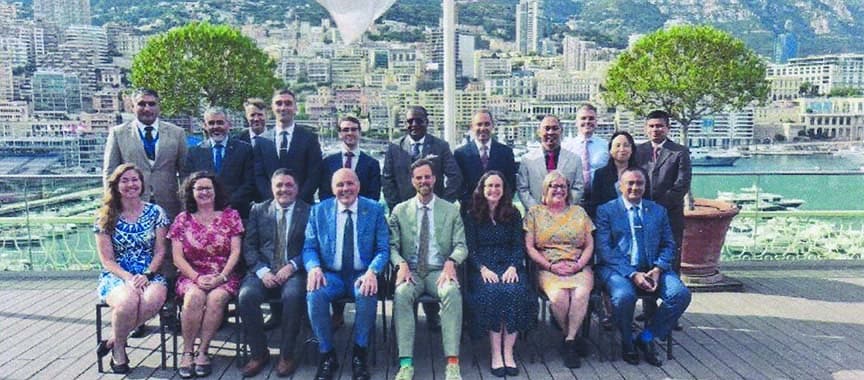How States Think:
A Strategic and Cognitive Framework for National Decision-Making
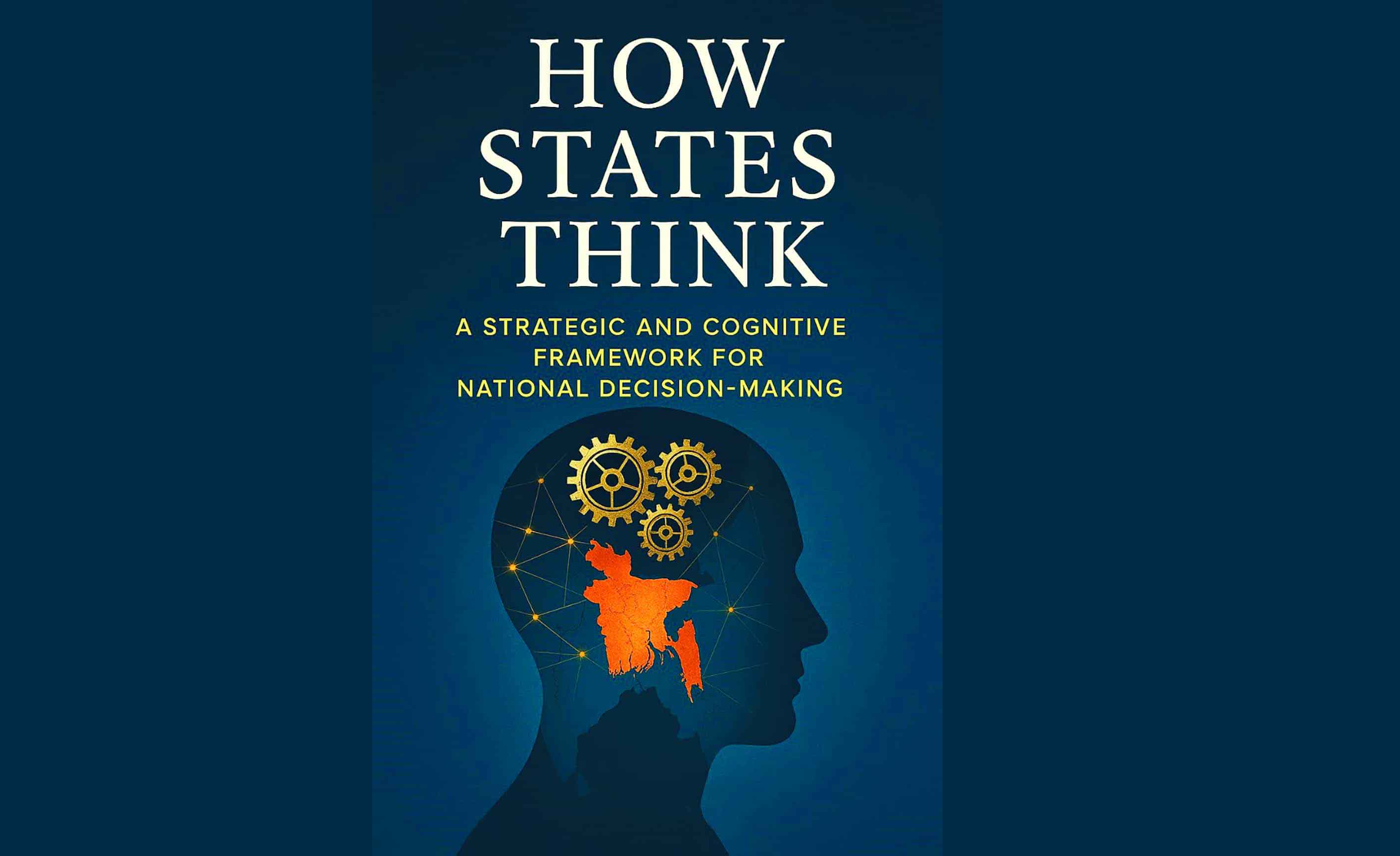
Brig Gen Md Mostafizur Rahman, ndc, hdmc, afwc, psc, PhD1
is serving as the Chief Instructor of the Armed Forces War Course at the National Defence College, Bangladesh
Abstract
State is made of its people and people are emotional elements. So the decisions made at the state level impacts collectively on the people or the citizens. It is true that in the decision making also has the imprints of emotional touch. However, rational decision making reduces the emotional influences. This article explores the rational construction of state decision-making by integrating strategic planning, systems thinking, emotional and rational drivers, and political psychology. It offers a conceptual framework for understanding how states behave like collective minds-balancing institutional logic with cultural and emotional nuance. The insights are tailored for policy makers, students of international relations, and military strategists seeking to decode the anatomy of national decisions.
Introduction
While a state is not an emotional being, its decisions reflect a collective cognition shaped by institutions, leaders, historical memory, and public sentiment. This article argues that state behavior mirrors human decision-making—bounded by rational structures but deeply influenced by emotional and cultural forces. The modern state is a community of persons. States are run by the governments. Governments are formed differently in different state. Governments are of the people, by the people and for the people. Once governments are chosen by the citizens, governments are given the authority to take decisions for the people within the given parameters set by the policy, strategy, proclamation etc. defined by the constitution. However, it is wondering how a state feels the needs to come to a decisions. Decisions made at the state level also follow the human thinking process in the combined form through a system. The system adopted in different country in a different way. Since, human being is an emotional being it also reflects its emotion in the decision making. Again a system is more of a rational procedure to come to a rational well-judged decision. State often deals with numerous problems and looks for the solution and takes decisions. While some problems may apparently look simple, may pose difficulties in making a solution. Moreover, states often need to face the challenge of fixing complex and wicked problems too. For this state needs to make decision following systems and system of systems.
Decision making is a systematic procedure of dealing with a problem and related information in a given circumstances with a view to reaching to a judgment or a decision. The information related to the problem basing on the relevance and presented empirically and the context in which it is extracted. The relevant information and circumstantial factors initiate a procedure that direct how people think through the challenges of dilemma of making decision. The researchers who study decision-making science suggests that decision making can be guided leading to effective decision making. Reaching at a sound decision requires the decision maker to weigh the risks and benefits against various options and a decision can only be taken when the possible benefit surpasses the possible losses while planning contingencies to mitigate risks.
Figure 2 Elements of the Decision Making Process
Defining Statehood and Strategic Identity
Statehood has so far proved to be most effective organizing idea in the international system. However, there is no unanimously agreed upon legal definition of statehood. The most popular construct was found in the 1933 Montevideo Convention on Rights and Duties of States. Most important elements of statehood were; defined territory, permanent population, government and capacity to enter into relations with other states. But are states like individuals in a state of nature, as Thomas Hobbes famously thought, or are they like individuals in a state? Insofar as they tend toward the latter or the domestic state even serves as the comparator for the international system then ideas of the state fundamentally organise international law in a second sense. As the universe progresses the nation also aspires to cope with the rapid development in science, technology, and education etc. all leading to the ultimate well-being of the people. As such the nation define their national vision, aim, mission, interest and objectives. Beyond legal definitions, a state's strategic identity is expressed through its: 2,3
• Vision: Visions are long-term aspirations of a Nation State. Such as for Bangladesh to transform Bangladesh into a peaceful, prosperous, and developed nation. achieving:
o High-income status (GNI per capita $13935 for the year 2024 defined by World Bank).
o Eradication of poverty.
o A knowledge-based, innovation-driven economy.
o Strong democratic governance and inclusive institutions. 4
• Aim: Aim is the general direction of national effort. To build a Bangladesh:
o Free from hunger and poverty.
o With high living standards for all citizens.
o Rooted in justice, equality, and national dignity.
• Mission: Mission is the role in regional/global context. To implement National Vision through strategic reforms and investments, including:
o Economic diversification (e.g., electronics, pharmaceuticals, IT services).
o Human capital development (especially in STEM education).
o Infrastructure modernization (smart cities, digital connectivity).
o Climate resilience and environmental sustainability.
• Interest: Core priorities (security, economy, culture). Bangladesh’s core interests include:
o Sovereignty and territorial integrity.
o Economic growth and global competitiveness.
o Social cohesion and inclusive development.
o Regional stability and international cooperation.
o Climate adaptation and disaster resilience.
• Objectives: Measurable goals supporting the mission as follows:
o Achieve Upper Middle-Income Status.
o Become a Developed Country.
o Ensure Inclusive Growth and Gender Equality.
o Expand Social Safety Nets and Reduce Inequality.
o Strengthen Governance and Rule of Law.
o Promote Sustainable Urbanization and Smart Cities.
o Enhance Export Diversification and Industrial Transformation.
o Build a Digitally Empowered Society.
National Interests of State
National interest refers to a sovereign state's Vision, Aim, Mission, Interests, and Objectives, which can encompass economic, military, cultural, and other objectives that the government aims to achieve. It is a key concept in international relations, as nations strive to fulfill or secure their national interests in various contexts. The definition can also vary based on contexts and perspectives, such as ideals versus self-interest and short-term versus long-term concerns. In foreign policy, national interest indicates what is best for the nation in its relations with other states.
Strategic Thinking: Making of National Decisions
Strategic thinking is a process mostly emanates from a orgnisational culture whereby one learns how to make the its vision a reality by developing abilities in team works, problem solving, and critical thinking. It also offers a set of tools to help adapt with changes, make appropriate plan in the changed scenario and make transitions. The decision makers envision new possibilities and opportunities. Strategic thinking requires one to envision what the ideal outcome ought to be and then work backwards by focusing on the story of how to reach the envisioned end state. Strategic thinking tools applied to organisations also apply to state or national decision-making as a larger organization or combined body or organisations lead by visionary leaders seasoned and matured in strategic thinking. To make an organisation effective or one to be effective as a leader, one must develop skills in strategic thinking. To attain that the decision makers must have a clear understanding as to how the strategic decisions are made. In other words how the leaders make decisions for the states. To enhance the strategic vision of the State it should focus on the following five criteria of strategy formulation:
• Organisation
State is composed of people of different strata, age, educational background etc. There are various institutions and structured organizations belonging to the legislative, executive and judiciary bodies of a state. At the same time the State has numerous resources to pursue its national interest to its aim, objective, vision and mission.
• Observation
Enhancing situational awareness. Being observant allows one to see things from "higher plane." By increasing the powers of observation, one becomes more thorough of what motivates people, how to solve problems more in the interest of the organisation and Nation and distinguish between the alternatives which suit for the nation more.
• Views
In strategic thinking, there are four viewpoints to take into consideration when formulating a decision for the organisation or a Nation; the environmental view, the operational view, the capability view, and the measurement view. Views can be used as tools to help one think about outcomes, identify critical elements and adjust their actions to achieve the ideal position. While a decision may be taken based on one view other views are also duly endorsed as contingencies.
• Driving Forces
What are the driving forces that will make the ideal outcome a reality? Driving forces usually lay the foundation for what the leader wants people to focus on (i.e., what factors will the leader use to motivate others to perform). Examples of driving forces might include: individual and organisational incentives such as recognition, award, reward, financial benefits. Moreover, empowerment and alignment; qualitative factors such as a defined and shared vision, values, and goals could also act as driving forces. Productive factors like a mission or function; quantitative factors such as results or experience; and others such as commitment, coherent action, effectiveness, productivity, and value are driving forces in an organisation as well as in a state.
• Ideal Position
After working through the first four phases of the strategic thinking process, one should be able to define the ideal outcomes.5 The ideal position outline should include: the conditions found to be necessary if the nation is to teach its goals, vision, mission etc. The niche in the battle space that the organisation will fill; any opportunities that may exist either currently or in the future; the core competencies or skills required; and the strategies and tactics which would need to be used to put it all together. By working through these five areas in an organisation, one get a clearer picture of exactly how the organisation’s vision can be accomplished. As the vision becomes focused, the ideas appear stronger and more credible.
• Strategic Focus
The foundations of a sound decision making for a state lie in a conscious strategic orientation or focus at the highest levels. A clear orientation is the “wellspring” of all other management processes. An appropriate orientation is possible only if top level management is acutely conscious of the necessity of such a focus as also the adverse consequences through lack of it.
Characteristics of Strategic Decision Making
The characteristics of strategic decisions are:
• They are taken by the top-management, the CEO of the government, the Cabinet, ministers, parliament etc.
• They involve the allocation of large resources; (M6I, resources are always scarce; Men, Money, Material, Machinery, Metre (Space), Minutes (Time), Information)
• They will have a significant impact on the long-term prosperity or success of the organization/ state.
• They are future oriented in different time span (Scenario building). Nations make decision to immediate crisis management to even for hundred years.
• Strategic issues usually have major multifunctional consequences (multifaceted results).
• Strategic issues necessitate considering factors of the external environment. The Strategic Management Process.
The strategic thinking defined earlier give the readers idea that strategic decision making as process consist of various stages, which are sequential in nature. Most theorists agree that there are four essential steps in the strategic management process, though they may differ with regard to its sequence, emphasis, or nomenclature. These four phases could be encapsulated as follows:-
• Articulating the hierarchy of strategic intent.
• Formulation of strategies.
• Strategic evaluation and control.
• Implementation of strategies.
These four steps are considered as sequentially linked to each other and each successive phase provides a feedback to the previous phases.6
The Nature of State Cognition and Government-People Interaction
• A state is not a person, but it behaves like a collective mind—an amalgam of institutions, leaders, norms, and public sentiment.
• Its “thinking” emerges from the interplay between rational structures and emotional undercurrents, shaped by history, ideology, and strategic interests.
• Both decision makes and subjects of the decisions are humans which are emotional being but aspires for a rational choice.
Government Decision
• Decisions are made through formal institutions (executive, legislative, and judiciary) and informal power networks.
• Influenced by:
o Strategic goals (security, economy, influence).
o Political ideology and party agendas.
o Bureaucratic inertia and institutional memory.
• Often framed as rational, but subject to internal biases and external pressures.
People’s Reaction
• Public response can range from supportive solidarity to mass dissent which may be influenced by:
o Media narratives and framing.
o Cultural values and historical grievances.
o Trust/mistrust/distrust in leadership and institutions.
• Emotional reactions (fear, pride, anger) can reshape or constrain future decisions.
Solidarity
• A state seeks to maintain internal cohesion through shared identity, national myths, and collective rituals and cohesion.
• Solidarity is both a goal and a tool—used to justify decisions or rally support.
• Can be fragile in diverse or polarized societies, requiring careful emotional management.
Rationality
• States use rational tools like:
o Strategic estimates.
o Cost-benefit analysis.
o Risk assessments.
o Institutional checks and balances.
o Environment–Values–Resources (E–V–R) congruence.
• Rationality is often bounded—limited by imperfect information, cognitive biases, and time constraints.
Whims
• Despite rational structures, states sometimes act on:
o Leader’s personal impulses or emotions.
o Sudden shifts in public mood.
o Symbolic gestures or moral posturing.
•These “whims” can lead to unexpected or irrational outcomes, especially in authoritarian or populist regimes.
Political Psychology and State Behavior
Political psychology explains deviations from rational models through:
• Bounded Rationality. Herbert Simon (1957) introduced the idea that decision-makers operate under constraints:
o Limited information.
o Time pressure.
o Cognitive limitations.
In state behavior, this means governments often settle for “good enough” decisions rather than optimal ones—especially during crises or complex negotiations. Sometimes leaders in crisis situation face a roller coaster environment where many from outside shouts but riders hardly make out a concrete guidance under above mentioned constraints.
• Cognitive Biases: Cognitive Biases. These are mental shortcuts or distortions that affect judgment:
o Confirmation Bias: Leaders generally feels comfortable with which they tend to believe which they want to believe.
o Framing Effects: The way a problem is presented (e.g., as a threat vs. opportunity) influences the policy response.
Example: A security threat framed as existential may lead to aggressive military action, even if diplomatic options exist.
• Groupthink: Irving Janis (1972) described how cohesive groups suppress dissent to maintain unity:
o In state cabinets or National Security Councils, this can lead to flawed decisions because alternative views are ignored. Which generally prefers a popular decision rather than correct/appropriate decision.
o Historical examples include miscalculations in war planning or economic policy due to overconfidence and lack of debate.
• Motivated Reasoning: Decisions are shaped not just by facts, but by identity, ideology, and emotion:
o Leaders interpret data in ways that align with their political goals or national narratives.
o Citizens may support policies that reflect group identity, even if they contradict objective interests.
This explains why populist movements or nationalist policies often gain traction despite economic downsides.
• Emotional Triggers: Emotions like fear, pride, anger, and humiliation can override rational calculations:
o Fear may lead to preemptive strikes or surveillance laws.
o National pride can drive ambitious infrastructure or space programs.
o Anger over perceived injustice may fuel retaliatory foreign policy.
These triggers are especially potent in authoritarian regimes or during national crises.
• Implications for State Behavior: States behave like collective minds, shaped by institutional logic and emotional undercurrents:
o Political psychology helps explain why rational models often fail to predict real-world decisions.
o It also highlights the importance of leadership psychology, media influence, and public sentiment in shaping national outcomes.
Emotional and Rational Drivers of State Decisions
Emotional Elements
• Culture: Shapes collective values and decision norms (Triandis, 1995).
• History: Influences national memory and trauma response (Nora, 1989).
• Tradition and Religion: Provide moral legitimacy and continuity.
• Ethnicity: Affects group loyalty and policy inclusion.
• Leadership Emotion: Charisma and emotional intelligence sway decisions (Goleman, 1998).
• Popular Perception: Media and public opinion create emotional pressure.
Rational Elements of Decision Making
Institutions
Institutions refer to the formal structures, rules, and norms that guide political decision-making. These include governments, bureaucracies, legal systems, international organizations, and even informal conventions.
How Institutions Promote Rationality:
o Rule-Based Decision Making: Institutions enforce procedures (e.g., parliamentary votes, judicial reviews) that reduce impulsive or arbitrary choices.
o Checks and Balances: Separation of powers ensures that no single actor dominates, encouraging deliberation and accountability.
o Continuity and Stability: Institutions preserve long-term strategies across leadership changes, avoiding erratic shifts.
o Expertise and Bureaucracy: Specialized agencies (e.g., central banks, foreign ministries) provide data-driven input and technical analysis.
Example: A democratic state may delay military action until it passes through legislative approval, ensuring broader consensus and legal justification.
Combined Decision: Rationality through collective deliberation
Combined decision refers to multi-actor decision-making, where various stakeholders—such as ministries, coalitions, or allied states—collaborate to reach a unified policy.
• Rational Features of Combined Decision:
o Diverse Input: Multiple perspectives reduce blind spots and improve problem-solving.
o Negotiation and Compromise: Rational outcomes often emerge from balancing competing interests.
o Shared Responsibility: Joint decisions distribute accountability, reducing risk of unilateral errors.
o Strategic Coordination: In international settings (e.g., NATO, UN), combined decisions align national actions with collective goals.
Example: Climate agreements like the Paris Accord are products of combined decision-making, where states negotiate targets based on mutual interest and scientific data.
Net Assessment
• A strategic tool used to evaluate relative strengths and weaknesses of competing entities.
• Common in military, geopolitical, and business contexts.
• Involves analysing capabilities, intentions, vulnerabilities, and trends.
• Helps leaders make informed choices about resource allocation and strategic posture.
Environment Scan
• A method for identifying external factors that could impact decisions.
• Includes PESTLE analysis (Political, Economic, Social, Technological, Legal, and Environmental).
• Helps anticipate risks, opportunities, and shifts in the landscape.
• Often used in strategic planning and market analysis.
Scenario Building
At the strategic level, SWOT Analysis, Threat Assessment and Scenario Building form the key tools in determining future strategies and force requirements based on comprehensive analysis of current and future trends and forecasting of likely competitions. Scenario building has a long history, beginning with its use in military war games. It moved to the RAND Corporation during and after World War II and was subsequently developed as a formal structured tool by the Hudson Institute. From the late 60's, scenario building has become popular in the corporate world also. In the early days, scenario analysis was essentially an extension of the traditional, "Predict and Control" approach to planning, except that a single line forecast was substituted with a probabilistic assessment of different futures, leading to a most likely projection.
• How It Supports Rational Decision-Making: Rational decision-making is a structured approach that relies on logic, evidence, and a step-by-step process. Scenario building complements this by:
o Expanding visualization: It helps decision-makers consider a bigger range of consequences and avoid tunnel vision.
o Reducing impacts of prejudice: By exploring multiple futures, it minimizes reliance on gut feelings or overly optimistic assumptions.
o Crystalizing the vision: It encourages long-term thinking and strategic agility, especially in uncertain environments.
o Aligning minds: Collaborative scenario development fosters shared understanding among stakeholders.
o Judging the Composure of the decision makers: It allows leaders to evaluate how their choices might perform under different conditions.
• Key Elements of Scenario Building
o Scenario logics: This is the heart of the process and establishes the basic structure for different scenarios. This stage involves defining the following.
o Drivers of change: The task team focuses on grouping the "high impact high uncertainty" forces – identified as Drivers (Variables” or “Drivers), which revolve around two or more critical "axes of uncertainty"
o Critical uncertainties: Pinpoint unpredictable factors that could shape outcomes.
o Scenario Selection: Scenario choice should be made through a carefully thought out procedure which generates acceptance and therefore ensures the scenarios will be authoritative and logical.
o Strategic implications: Analyze how each scenario affects goals, risks, and opportunities.
Strategic Estimate
• A comprehensive evaluation of future scenarios and potential courses of action.
• Synthesizes data from net assessments and environmental scans.
• Used to forecast outcomes, assess feasibility, and guide long-term planning.
• Often includes contingency planning and risk mitigation strategies.
Interference and Influence in Decision-Making
States face internal and external pressures that may distort national interest:
Actors in the Decision-Making Process
At the state level given with the authority or accepted by the people are different actors who take the decision for the people.
Institutional Actors
• Executive (President, Prime Minister/Chief Advisor, Cabinet).
• Legislature/Parliament.
• Judiciary.
• Bureaucracy.
• Military and Security Agencies.
Non-Institutional Actors
• Political Parties.
• Media.
• Civil Society and NGOs.
• Religious and Cultural Leaders.
Structural and Philosophical Dimensions
Decision Making Process
• Typically involves:
o Problem identification (Simple problem, complex problem and wicked problem).
o Information gathering.
o Option evaluation.
o Choice and implementation.
o Feedback and adjustment.
• In reality, this process is often non-linear, shaped by crises, lobbying, and emotional triggers.
Systems Thinking in Governance
Hard System Thinking
Hard system thinking can be defined as systems of engineering thinking (may not really be an engineering issue) whereby a systematic procedure that is applied when finding a solution to a problem. Goede (2005) explains that the hard system thinking deliberates on a system that is based on specific goals that are well-defined. These type of system thinking is mostly applied when there is need to design solutions to achieve specific goals and objectives. The core of hard system thinking approach is made up of many subsystems whose components can be acknowledged and measured to come up with a justification of how those subsystems work. This system may also be applied for making a decision at state level following different stages of the process. The hard system thinking comprises of seven stages. These stages include awareness and commitment as the first stage which creates awareness which generates the scope, purpose, and objectives that define the problem. Commitment is essential to achieve the goals and objectives that have been set. The next stage is constraints whereby the objectives, as well as constraints, are analyzed to form the corporation’s direction and nature. Then, the objectives and goals are established in the form of mission and vision of the organization. The organization will then identify numerous alternatives that can be applied to achieve the solution. The alternatives are then measured to create a significant judgment which will be useful in achieving the set goals. The alternatives are quantified against a set of criteria that will determine the efficiency and effectiveness of performance. Finally, the hard system thinking model is implemented and evaluated to identify how reliable it is.7
Used in engineering-style problem solving, it follows a linear process:8
• Awareness and commitment.
• Constraints analysis
• Goal setting.
• Alternatives generation.
• Evaluation
• Implementation.
• Feedback and control.
Soft System Thinking
Soft system thinking can be defined as strategies that are used to examine complicated situations that arise from problems. Peter Checkland created the soft system methodology. Soft systems thinking has the primary objective of finding acceptable advances that could be applied in those situations. Furthermore, this systems thinking aims at improving the system through four stages. The first stage is information gathering where the problem is carefully observed especially the elaborate details and the perception of the problem. This is done through collecting qualitative data like opinions regarding the situation of the problem. The next stage is description where soft system’s models are expressed. These systems should be dependable on different perspectives but fall within the description. After the description, the models are compared with the observed real-world situation, and a conversation is made between the owners of the problem to come up with a viable solution. Finally, a modification is tabled by both parties that are assumed to lead to improvements in the situation of the problem (Hasan, 2011).
Sharing of State Power Balance
Horizontal Power Sharing:
o Between branches of government: Executive, Legislature, and Judiciary.
o Prevents concentration of power; enables checks and balances.
Vertical Power Sharing:
o Between central and local governments.
o Promotes regional autonomy and responsiveness.
Coalition Politics:
o Power shared among multiple parties in both in power and opposition.
o Requires negotiation and compromise.
International Influence:
o Global institutions and treaties can limit unilateral decisions.
o States may share sovereignty in areas like trade, climate, or security.
Conclusion: Mapping the Mind of the State
Any decision taken systematically will likely to be rational and sound. Whimsical decision in most cases becomes irrational. When it comes to a nation for taking decision it has to be rational decision for which following a system is mandatory. National decision for waging war can’t be taken out rightly. It is always presume by west that leaders like Hitler or president of North Korea Kim Jong Un to be irrational. Only because, apparently they don’t follow any decision making process. May be, they follow a system or maybe not. However, a decision following a deliberate process may also go wrong or be less than perfect. As it is known that USA waged Iraq war for alleged production and holding of WMD by Saddam Hossain which was proved to be incorrect. Decision making at the state level affairs is the synchronization of dynamic multifarious elements. It is the interplay of logic, institutional structure, emotional interaction and psychological consequences. For policy makers, understanding this framework enables more rational, practical, and effective and rule based governance free from personal prejudice and biasness. For students, it offers a lens to understand international behavior. For military strategists, it provides tools to anticipate adversarial moves and shape national posture. At the state level, more systemic decisions are made, more it is likely to be sound with less of negative impacts on the people who are emotional and reactive. Without a proper methodology sometimes a sound decision may be reached by chance. This will largely depends to the honesty, charisma, ingenuity and luck of the leaders or the ultimate decision makers. But if the proper decision making process is followed most of the time a good decision is likely to be reached with contingency preparation of the probable lacunas of the decision taken.
Footnote:
1. The Author is serving as the Chief Instructor, Armed Forces War Course in National Defence College, Bangladesh.
2. Montevideo Convention - Wikipedia
3. Montevideo Convention on Rights and Duties of States | International Law Documents | Cambridge Aspire website
4. Bangladesh Vision- Wikipedia
5. (Booth, 1979; Mintzberg, 1994)
6. https://www.managementstudyguide.com/strategic-decisions.htm
7. https://studybounty.com/hard-systems-thinking-what-it-is-and-how-to-use-it-essay
8. (Goede, 2005)
References
Booth, K. (1979). Strategy and Ethnocentrism, Routledge Revivals, London
Checkland, P. (1981). Systems Thinking, Systems Practice. John Willey and Sons, Chichester
Goleman, D. (1998). Working with Emotional Intelligence, Bantam Books, New York
Goede, R. (2005). Hard Systems Thinking: What It Is and How to Use It.
Janis, Irving L (1972), Victims of Groupthink: A psychological study of foreign-policy decisions and fiascoes. Boston: Houghton Mifflin
Mintzberg, H. (1994). The Rise and Fall of Strategic Planning, Harvard Business Review, https://hbr.org/archive-toc/3941
Mearsheimer, John J and Rosato Sebastian (2023), How States Think: The Rationality of Foreign Policy, Yale University Press, New Haven
Nora, P. (1989). Between Memory and History: Les Lieux de Mémoire, University of California, Digital Journal, Between Memory and History: Les Lieux de Mémoire on JSTOR accessed on 24 August 2025.
Simon, H. (1957). Models of Man: Social and Rational. Willey
Triandis, H. (1995). Individualism and Collectivism. Routledge, New York.






